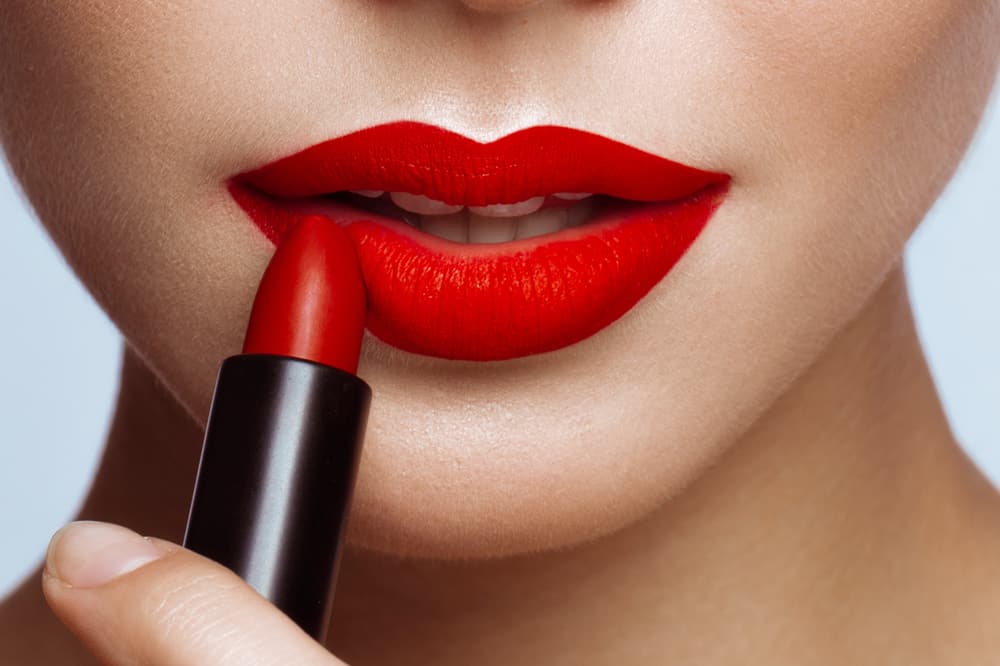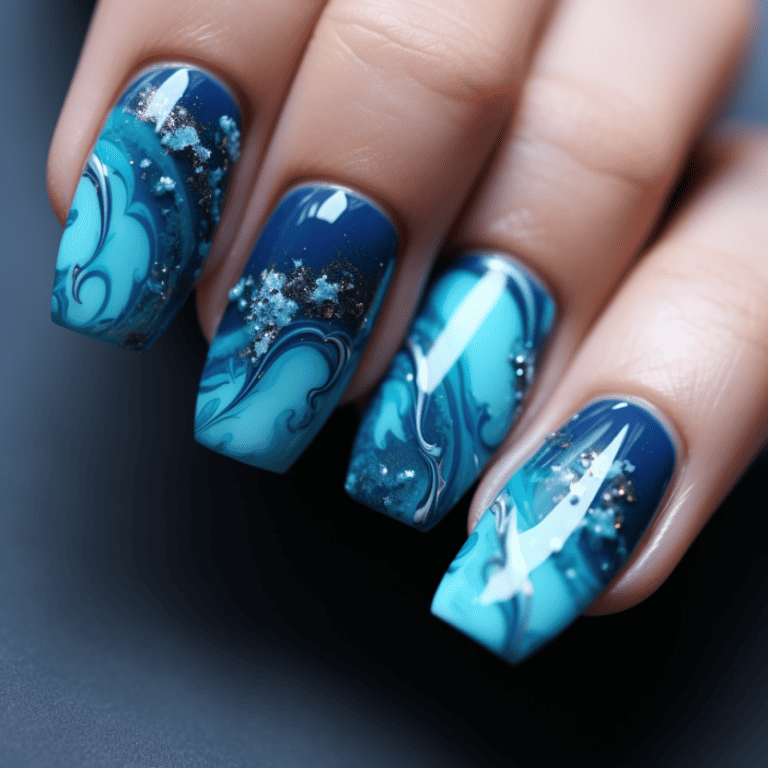Why Is My Lipstick Sticky? (Reasons, Fixes)

When applying makeup, we all want to look our best.
Applying lipstick perfectly is a tricky process that takes a steady hand and patience.
However, sometimes the overall look we were going for doesn’t turn how we expected for several reasons, including mistakes we’ve made and the type of product we’re using.
Each lipstick product is different, each with its own “recipe” of ingredients affecting how effectively the product works.
When we find our lipstick to be sticky, there might be a few reasons.
Why Is My Lipstick Sticky? (Reasons, Fixes)
1. You’re Using Lip Gloss

Though some people prefer lip gloss in lieu of lipstick, they don’t fully understand the differences.
Lip gloss and lipstick are both intended to add color to your lips, but have many differences as well.
Lip gloss has a liquid consistency and usually comes in a tube with an applicator stick inside, used to rub the lip gloss onto your lips.
Lipstick is solid and usually comes in a swivel tube that you apply directly to your lips.
Depending on the kind of lipstick you get, you’ll get a more matte finish than when using lip gloss.
After all, lip gloss is intended to gloss the lips, leaving a wet, shiny look on the lips.
Clear lip glosses highlight your natural lip color by covering them in a wet-looking sheen.
Another major difference between lipstick and lip gloss is that lip gloss can be very sticky.
Some lip glosses are thinner in consistency than others, which may lead to less stickiness, while many use a thicker liquid formula to better adhere to the lips and stay on throughout the day.
The solution to this problem may lie in the product itself, as some lip glosses might not agree with your lips.
Try a few different brands to find one that works for you.
However, you can try dusting your lips with a translucent face powder after applying your lip gloss, too.
Another way to fix the problem according to Frends Beauty is to “try running an ice cube over the top of your lips after applying. It smooths it out and de-goops it.”
2. You’re Using Liquid Lipstick

Though liquid lipstick has similarities to lip gloss, it’s much thicker and richer in pigment.
Whereas lip gloss is meant to make your lips pop with shine, liquid lipstick leaves your lips with more of a matte finish.
However, sometimes liquid lipstick can have the same stickiness problems as lip gloss.
If your lips feel sticky after using a liquid lipstick, it’s because your lips are too moisturized.
The extra moisture creates a sticky feeling and might even create strands of lipstick when you pull your lips apart.
Like with lip gloss, you can try switching brands, as each one will have a different moisture content.
Your best bet, however, is to apply a small amount of setting powder over the lips.
The powder works effectively in two ways: it absorbs extra moisture on the lips and it keeps your lipstick in place for longer.
3. You Applied Too Much

It’s easy to apply too much lipstick when we’re on the go or rushing through our morning routine.
Without thinking, we rub the lipstick tube ten times over the lips, creating a compact, heavy, and oftentimes, sticky look and feel.
Even though we want our lipstick to stay in place throughout the day, piling on layers of it is not the answer.
Too much lipstick can create a sticky mess, making us uncomfortable and unhappy with our look.
This problem might also occur near the end of the day when we’ve touched up our lips at least five times throughout the day.
Many modern-day lipsticks are meant for all-day wear and do not need to be touched up periodically.
However, old habits die hard, and we find ourselves unconsciously touching them up.
If your lips are feeling heavy and sticky, look for a lipstick meant to last all day.
Apply it once in the morning with no more than two coats and see how your lips look by the end of the day.
The less you add to the original layer, the less heavy and sticky your lips will feel.
If you find yourself still having to touch them up throughout the day, try another brand that promises all-day wear.
When you find the right one, you can apply it once and not have to worry about it until you wash your makeup off at night. Your lips will feel lighter and less goopy.
It’s also recommended that you dab off excess lipstick with tissue after you apply it.
This will help keep your lips from sticking together from too much product.
Using a lip liner will also help prevent you from using too much lipstick and keep it from smearing.
4. Your Lipstick Has Expired

There are a few indicators that your lipstick product has expired, and stickiness is one of them.
Like all makeup, lipstick has a shelf-life (usually between one and two years) and should be discarded once it hits that mark, whether the tube is empty or not.
If you find yourself using lipstick that’s five years old, you’ll probably find yourself in discomfort and could even be putting your health in danger.
Expired lipstick is no joke and can contain enterococcus faecalis, the bacteria that can cause meningitis.
As lipstick ages, its ingredients start to break down.
In addition to possibly causing serious health problems, it may leave your mouth burning or itchy.
In less serious reactions, the texture of the lipstick could change as its particles break down, creating a goopy and sticky result.
In expired lipstick, moisture can rise to the surface and appear as small water beads on the lipstick’s exterior surface.
In other situations, the expired lipstick might smell bad, giving off an odd odor.
The lipstick color may also start to fade as the color pigments break down over time.
If you notice any of these signs, it’s best to throw out the lipstick product and buy a new one.
5. You Didn’t Exfoliate Before Application

A lot of people know to exfoliate their faces, but few remember to exfoliate their lips.
Our lips produce thousands of dead skin cells every day, and if those dead cells are not properly removed, they can start to build up, causing flakiness, dryness, and other irritations.
If you don’t properly exfoliate your lips daily and apply lipstick on top of the dead skin cells, debris, and pollutants, the consistency of your lipstick may be off.
Your lipstick will attach to those unwanted byproducts and create a sticky texture.
A great way to prepare your lips for lipstick is to gently exfoliate them by running a wet toothbrush over them.
Then apply a foundation, which will act as a base surface for your lipstick to attach to.
This gives your lipstick staying power, making it much more likely to stay in place the rest of the day without constant touchups.
You can also choose to use a lip primer, which will act similar to a foundation in that it gives your lipstick something to stick to for all-day wear.
6. You Forgot to Moisturize

Adding moisture to your lips may seem counterintuitive to prevent lipstick from getting sticky, but similar to the need to exfoliate, our lips need to be properly hydrated.
Moisturizing your lips prevents dryness and chapping, which can cause lipstick to goop up and stick.
The best routine you can do for your lips is to exfoliate them and then immediately apply a moisturizing balm to replace the moisture that was lost through exfoliation.
Wait a few moments for the moisturizer to settle in before applying your lipstick.
This will help give your lips an even, smooth, and long-lasting look, without stickiness.
If you still find your lipstick to be sticky, use less moisturizer and wait longer before applying your lipstick.
Finding the right balance between dryness and moisture is key in properly getting your lips ready for a non-sticky day.
7. You’re Not Wiping Your Mouth After Eating or Drinking

When we’re on the go, eating or drinking quickly, we often forget to thoroughly wipe our mouth after consumption.
Whether we ate sticky food or drank tea with honey, food particles left on our lips can easily cause our lipstick to goop up.
It’s important to remember to wipe our whole mouth area with a dry cloth or napkin after eating or drinking anything.
If possible, run warm water over your mouth to get a better clean.
Then, reapply your lipstick if you notice some of the color is gone.
Some all-day lipsticks can stand the test of eating and drinking throughout the day, while others may need a touchup afterward.
Remember, do not reapply if you don’t need to, and only apply the minimum necessary when you do need to reapply.
A clean and clear mouth will help prevent stickiness throughout the day.
8. You’re Biting or Chewing Your Lips

Many of us don’t even realize we’re doing it, but biting or chewing on our lips over the course of the day is a common occurrence.
We often do it when we’re nervous or anxious, so doing this action at work is a fairly normal thing.
However, we should get ourselves out of this habit, as it messes up our makeup, removes our lipstick, and dries our lips out.
Besides causing dryness, we create flakiness and cuts and leave our lips in need of repair by the end of the day.
Keeping our lips in constant disrepair can cause unwanted stickiness.
Plus, the constant addition of saliva on our lips adds excessive moisture to our lipstick, causing it to stick and goop.
Though it can be hard to remember, it’s important to leave our lips alone in times of worry.
Getting a stress ball can effectively channel your anxiety and save your lips from being torn up.
9. You Live in a Humid Place

Unfortunately, our location has a lot to do with how our makeup turns out.
Most people don’t think about the local climate when purchasing and using cosmetics, but it actually has a huge effect on our skin, and therefore, our makeup.
For example, colder climates as well as desert areas often have dry, arid air.
This, in turn, dries our skin out, leaving it in need of extra moisturizing.
On the other hand, warmer, wetter climates produce humid air, which contains more moisture.
Though humid air might be better for your skin overall, it can also create excessive moisture on your lips.
When our lips are overly moisturized, our lipsticks are prone to create a sticky effect.
The product itself will start to melt in hot, humid climates, also causing it to be sticky once applied.






